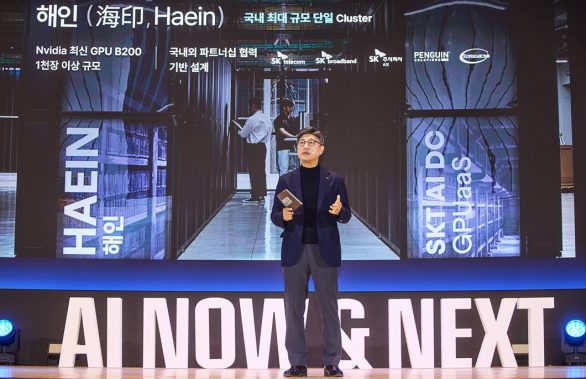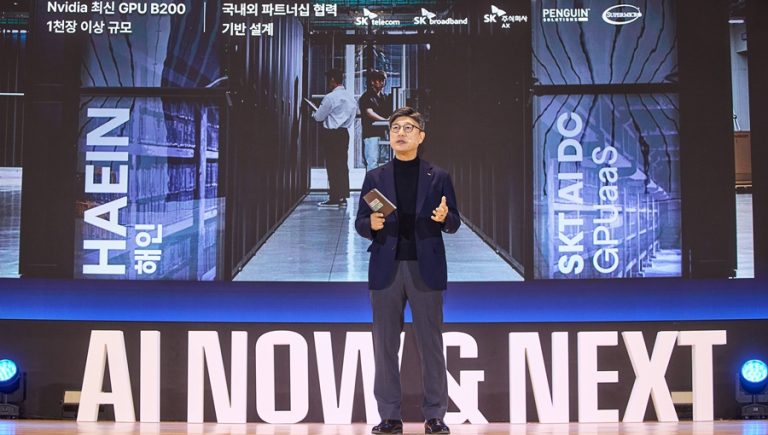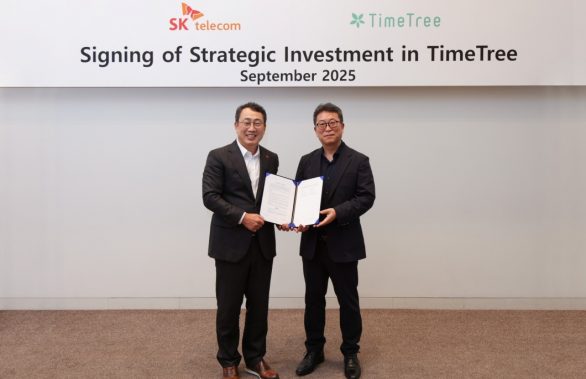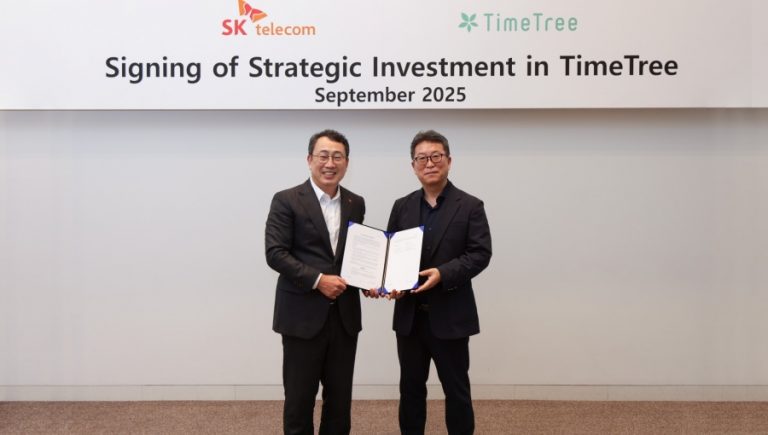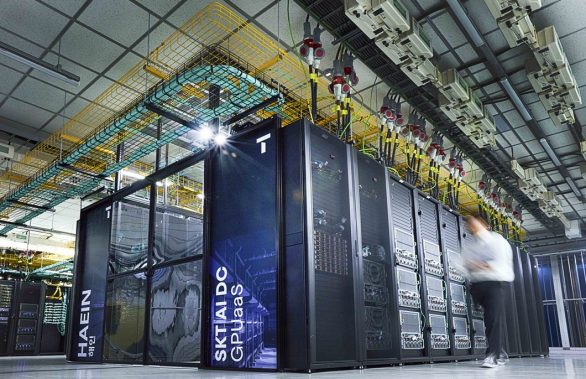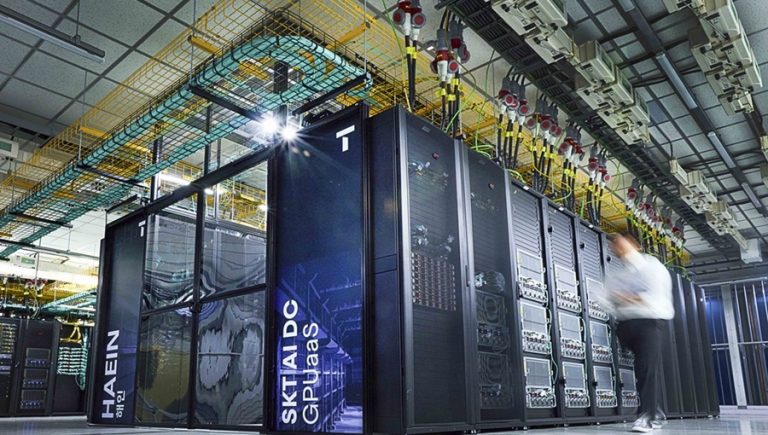• CEO Ryu Young-sang delivered keynote speech at SK AI Summit, outlining company’s plan to build AI infrastructure based on three core areas: AI Data Center (AIDC), GPU-as-a-Service (GPUaaS), and Edge AI, to become AI hub in Asia Pacific region
• Company plans to build gigawatt-scale AIDCs at key regions in Korea, with AIDC testbed opening in Pangyo, Korea, in December
• Through partnership with Lambda, GPUaaS is expected to launch in December
• Leveraging Edge AI based on robust nationwide communications network, company aims to strengthen AI infrastructure and present blueprint for 6G
• SK Telecom plans to expand globally by collaborating with partners in Korea and abroad, providing AIDC solutions and leading technology standardization

SK Telecom (NYSE: SKM) has revealed plans to expedite the company’s artificial intelligence (AI) initiatives by constructing an ‘AI Infrastructure Superhighway.’
On the first day of the two-day AI event, which ran from November 4 to 5, CEO Ryu Young-sang presented the company’s strategy during his keynote speech on the AI Infrastructure Superhighway.
The plan is based on a robust connection of national AI infrastructure along three core axes: AI data centers (AIDCs), a cloud-based GPU service (GPU-as-a-Service, GPUaaS), and Edge AI. Based on this strategy, the company plans to expand globally in collaboration with partners in Korea and abroad.
Constructing AI Data Centers in South Korea’s key regions
SK Telecom plans to start with hyperscale AIDCs that require more than 100 megawatts (MW) in local regions, with future plans to expand its scale to gigawatts (GW) or more, to leap forward as the AIDC hub in the Asia Pacific region.
By extending the AIDC to national bases, centers can secure a stable power supply through the utilization of new renewable energy sources such as hydrogen, solar and wind power, and easily expand to global markets through submarine cables. SK Telecom anticipates building AIDC cost-effectively when the data center combines SK Group’s capabilities in high-efficiency next-generation semiconductors, immersion cooling, and other energy solutions, along with its AI cluster operation.
Prior to this, SK Telecom plans to open an AIDC testbed in Pangyo, Korea, in December, which combines the capabilities of the SK Group and various solutions owned by partner companies. This facility, where all three types of next-generation liquid cooling solutions—direct liquid cooling, immersion cooling, and precision liquid cooling—are deployed, will be the first and only testbed in Korea. It will also feature advanced AI semiconductors like SK hynix’s HBM, as well as GPU virtualization solutions and AI energy optimization technology. This testbed will provide opportunities to observe and experience the cutting-edge technologies of a future AIDC.
Supplying GPU via cloud to metropolitan areas
SK Telecom plans to launch a cloud-based GPU-as-a-Service (GPUaaS) by converting the Gasan data center, located in the metropolitan area, into an AIDC to quickly resolve the domestic GPU shortage.
Starting in December, SK Telecom plans to launch a GPUaaS with NVIDIA H100 Tensor Core GPU through a partnership with U.S.-based Lambda. In March 2025, SK Telecom plans to introduce NVIDIA H200 Tensor Core GPU in Korea, gradually expanding to meet customer demand.
Through the AI cloud services (GPUaaS), SKT aims to enable companies to develop AI services easily and at a lower cost, without needing to purchase their own GPUs, ultimately supporting the vitalization of Korea’s AI ecosystem.
Introducing ‘Edge AI’ to open a new opportunity in telco infrastructure
SK Telecom plans to introduce ‘Edge AI,’ which can narrow the gap between AIDC and on-device AI, using the nationwide communication infrastructure.
Edge AI is an infrastructure that combines mobile communication networks and AI computing, offering advantages in reduced latency, enhanced security, and improved privacy compared to large-scale AIDCs. Additionally, it enables large-scale AI computing, complementing the existing AI infrastructure, compared to on-device AI.
SKT is currently conducting research on advanced technologies and collaborating with global partners to build AIDC-utilizing communication infrastructure and develop customized servers. The company is also carrying out various proof of concept (PoC) projects across six areas, including healthcare, AI robots, and AI CCTV, to discover specialized Edge AI services.
“So far, the competition in telecommunications infrastructure has been all about connectivity, namely speed and capacity, but now the paradigm of network evolution should be changed,” said Ryu Young-sang, CEO of SK Telecom. “The upcoming 6G will evolve into a next-generation AI infrastructure where communication and AI are integrated.”
Developing a comprehensive AIDC solution to enter global market
SK Telecom plans to develop a comprehensive AIDC solution that combines AI semiconductors, data centers, and energy solutions through collaboration with AI companies in Korea and abroad, with the aim of entering the global market.
SK Telecom aims to lead the global standardization of Edge AI and collaborate on advanced technology research, while working towards the transition to 6G AI infrastructure.



